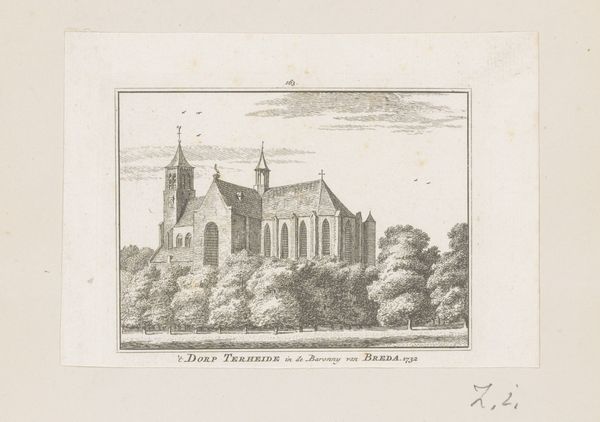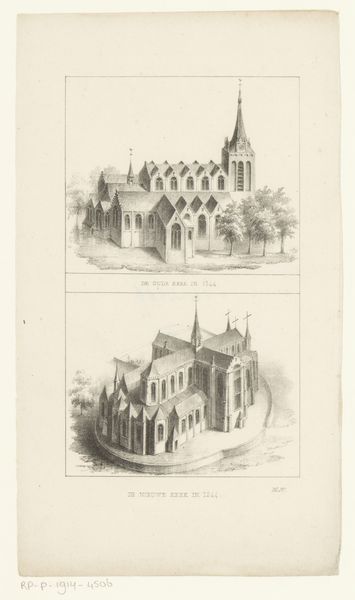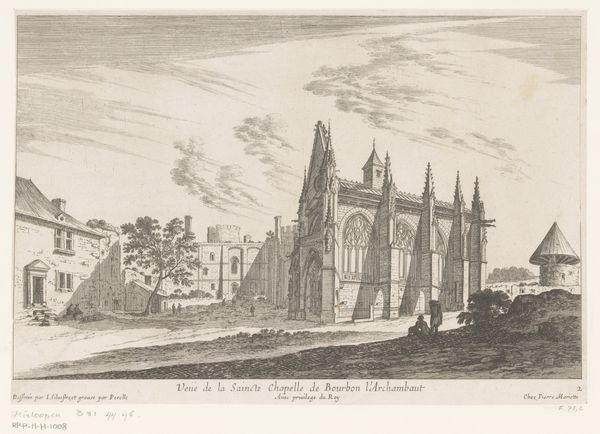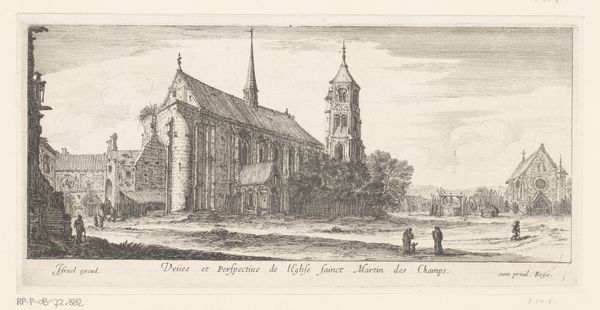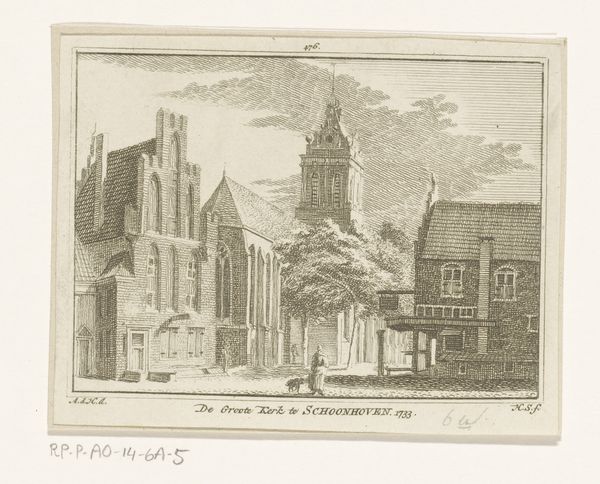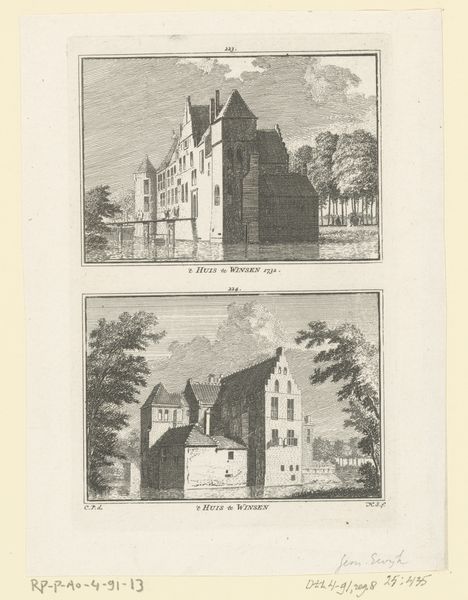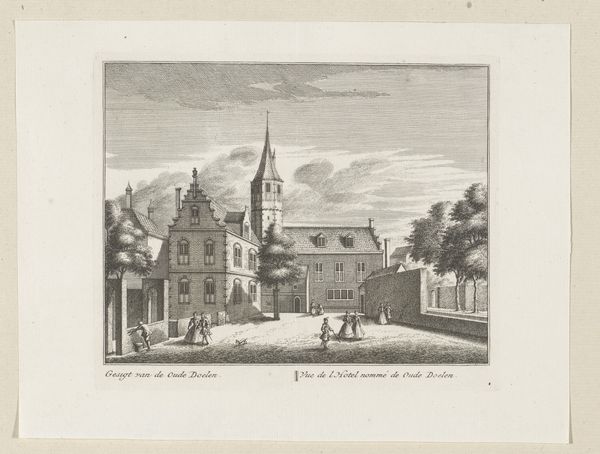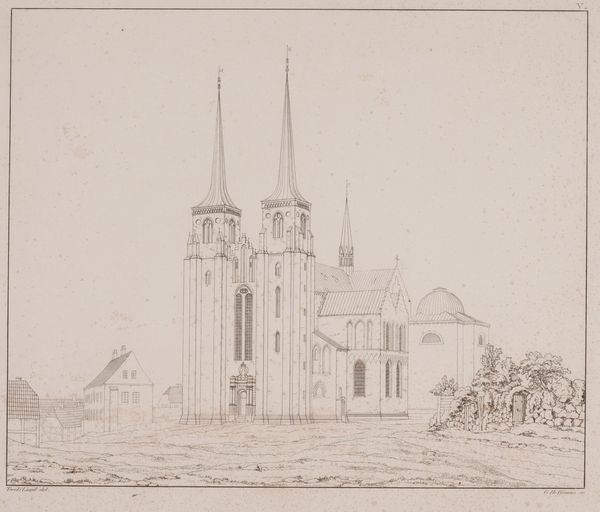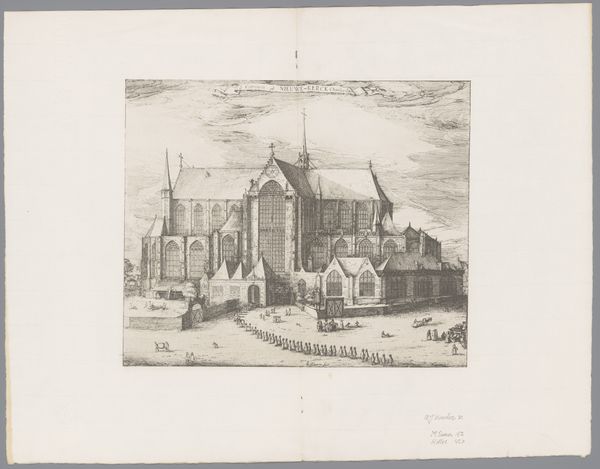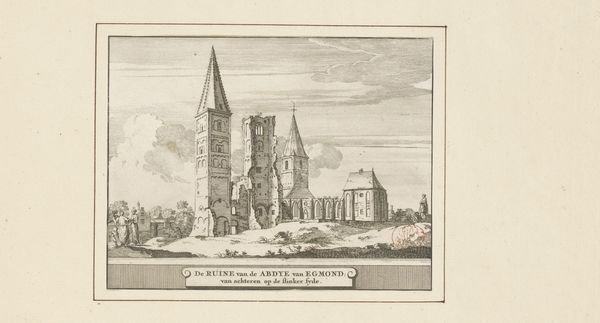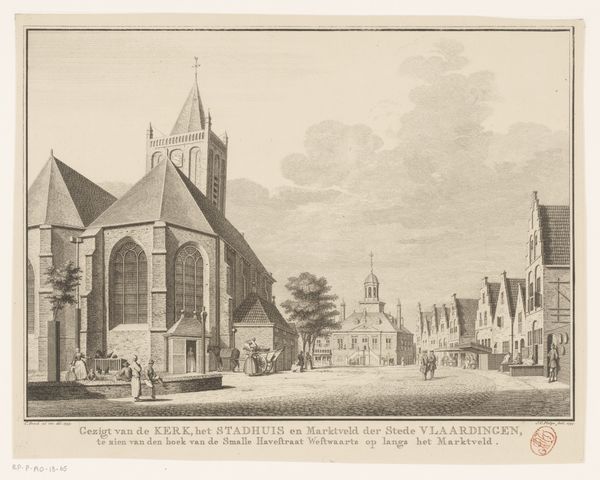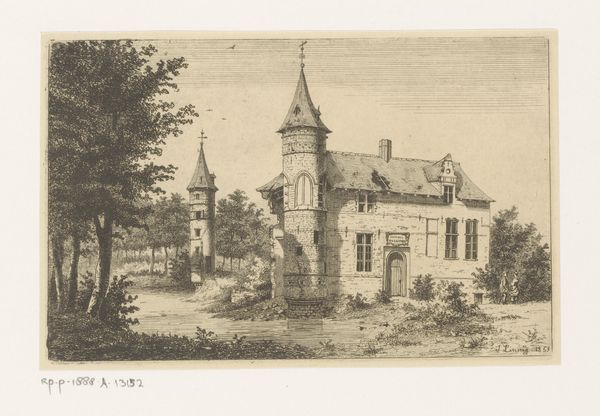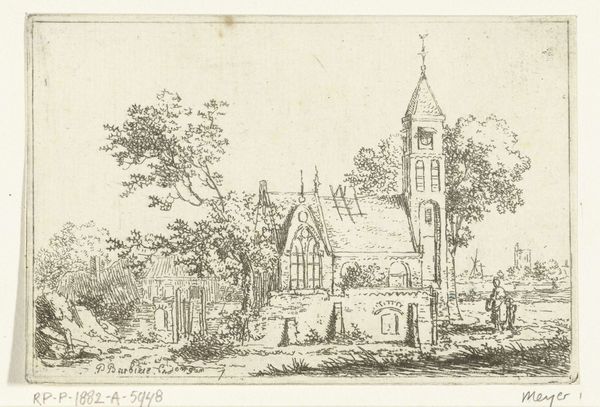
print, etching
#
baroque
#
pen drawing
# print
#
etching
#
old engraving style
#
landscape
#
line
#
cityscape
Dimensions: height 120 mm, width 254 mm
Copyright: Rijks Museum: Open Domain
Claude Goyrand’s ‘View of the Notre-Dame in Boulogne’ was likely made in the mid-17th century, using etching techniques. It's a process where the artist covers a metal plate with a waxy, acid-resistant coating, and then scratches an image into the wax with a needle, exposing the metal beneath. The plate is then immersed in acid, which bites into the exposed lines, creating grooves. Ink is applied to the plate, filling these grooves, and the surface is wiped clean. Finally, the image is transferred onto paper under high pressure. The material qualities of the metal determine the depth and character of the lines, while the artist's skill controls the precision of the image. Goyrand expertly uses etching to create a detailed depiction of the Notre-Dame, highlighting its architectural features and surrounding landscape. The sharp lines and subtle shading bring depth and texture to the scene, reflecting the era's reverence for detailed craftsmanship. Understanding the labor-intensive processes of etching enhances our appreciation of Goyrand's artistic skill, blurring the lines between fine art and craft.
Comments
No comments
Be the first to comment and join the conversation on the ultimate creative platform.
